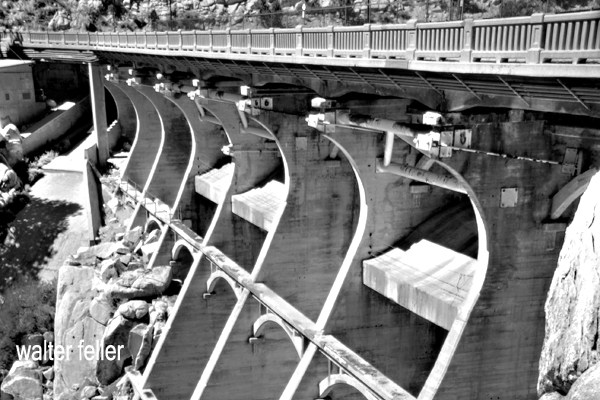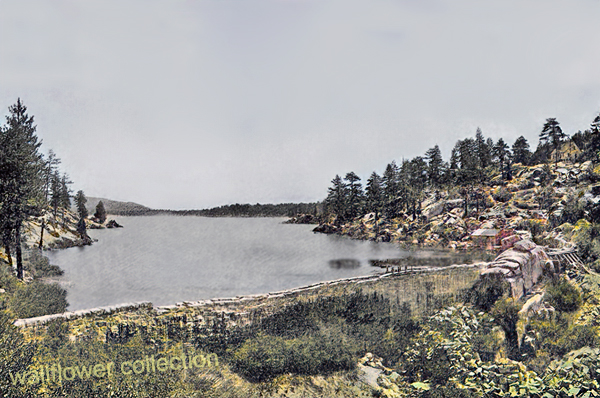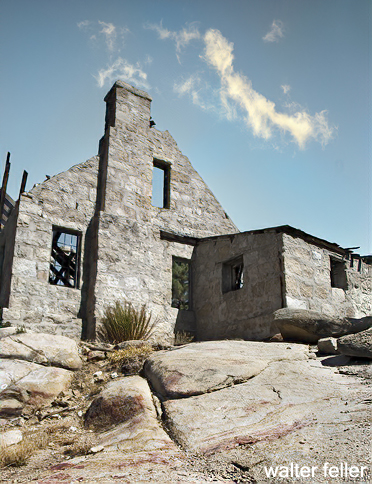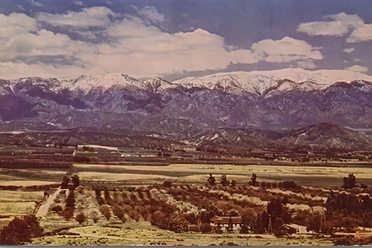Eastwood Dam

Eastwood Dam
In 1884, citrus growers in the San Bernardino Valley built a dam and reservoir to irrigate their groves.
Almost immediately, it was apparent the dam was not high enough, as the reservoir was completely dry during the summers of 1898, 1899, 1900, and 1904.

Brown Dam - 1885
The first task was to investigate the construction of a taller dam required to ensure a reliable water supply for citrus growers in the San Bernardino Valley. In 1903, the Bear Valley Municipal Water Company would manage the project.
It would be the fourth dam at the site - the first, a temporary eight-foot-high mud barrier built in 1883 to prepare for the main dam; the second, a rubble masonry single-arch dam finished in 1884, which formed the lake; and the third, a rockfill dam that started in 1891 but work was left incomplete.
New Dam
After deciding that the rockfill dam south of the ridge wouldn't be adequate, the water company awarded a contract to J.S. Eastwood. The contract called for a dam with reinforced concrete facing 150 feet downstream from the existing dam.Construction took place in 1910 and 1911.
Eastwood's plan would support 7 feet more water pressure than the bid, so he got the go-ahead. As a result of the decision, the water company flooded land they did not own. An embarrassment not resolved until 1922.
Eastwood's plans also called for reinforcing rods one inch in diameter for the arches. Although no invoices indicate the steel was purchased, neither have the rods been detected through physical testing, leading many to believe they were not included.
A Sight to See
As a result of the newly constructed multiple-arch dam, the lake's capacity doubled, and it is 15 feet higher than the old structure. The construction process itself became a tourist attraction. Castle Rock was a popular location where workers lived in cabins built for them.The blasting would take place during the worker's lunch break. The dam's caretaker from 1906 to 1918 lived in a stone house built in 1890 above the dam. His daughter Ellen recalls her mother hiding her and her sister behind a large boulder or in the house during blasting. Flying rocks occasionally hit the roof, and one flung through a window onto Gertrude Knickerbocker's empty bed.
The area now covered by Big Bear Lake was heavily forested, and loggers gladly contracted to cut down these trees. Men would go out on the ice in the winter to fell the trees and then return after the thaw to haul them by boat to the mill pond at Windy Point. In town, clocks were set by the mill whistle, blown four times a day, six days a week.
-wf

Dam Keeper's House

View of early San Bernardino